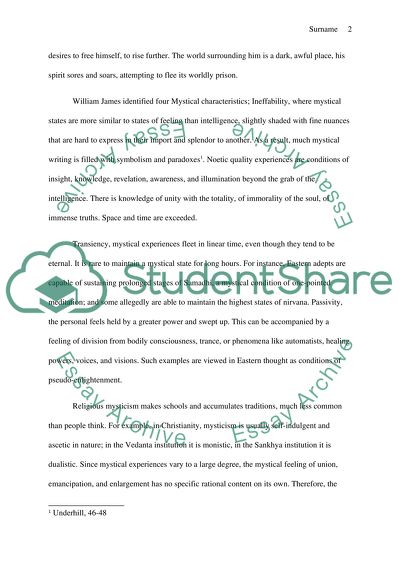Cite this document
(“Mystical experience Assignment Example | Topics and Well Written Essays - 1250 words”, n.d.)
Retrieved from https://studentshare.org/religion-and-theology/1398919-midterm-paper
Retrieved from https://studentshare.org/religion-and-theology/1398919-midterm-paper
(Mystical Experience Assignment Example | Topics and Well Written Essays - 1250 Words)
https://studentshare.org/religion-and-theology/1398919-midterm-paper.
https://studentshare.org/religion-and-theology/1398919-midterm-paper.
“Mystical Experience Assignment Example | Topics and Well Written Essays - 1250 Words”, n.d. https://studentshare.org/religion-and-theology/1398919-midterm-paper.


